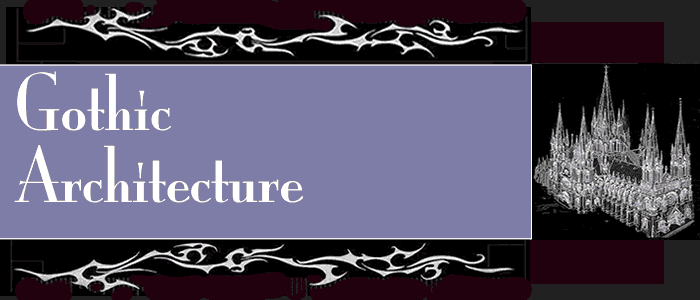Early English Gothic
The Early English period, although not the first Gothic Period ever,
was the first to make its way to England. It is also referred to as the
“Lancet style” and the “First Pointed style”.
The Early English period spans the years from approximately 1200-1300,
and focused on simple lines instead of fancy decoration.
Height was emphasized in architecture from the Early English period,
but the main difference between it and the preceding Romanesque period
(also known as the Norman period) is the pointed arch. Because arches
could span greater distances and support a larger amount of weight, vaults
could be built taller and wider, walls could become thinner, and windows
larger. The larger windows allowed stained glass to be usedmore and more
frequently.
This period brought with it the introduction of flying buttresses in
place of the simple buttresses used in the Romanesque period. Although
the flying buttresses did help distribute the weight of the walls and
ceiling, they would not make a large impact on how Gothic architecture
would be built until the Decorated period. Flying buttresses can sometimes
be seen over Early English church aisles, but are often hidden in the
roofs.
The large, thick columns of the Romanesque period became thin clusters
of shafts. These shafts were often built using Purbeck marble and had
carvings of foliage designs, which was the style of the time. It was possible
for these designs to be created because of the introduction of chisels
in place of axes for carving.
Initially, the windows in this period were very simple and were placed
either singly or put together in small groups. As this period progressed
a small amount of detail was given to them. For example, small ornamental
holes were put in the space in the moulding, under the peaks of windows
that came to a point. As this technique (known as Plate Tracery) became
common, the holes became more decorative and evolved into trefoil and
quadrafoil designs.
HOME
|





